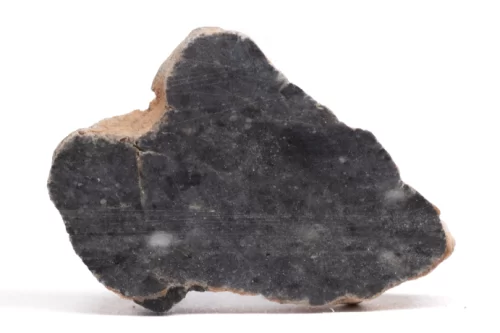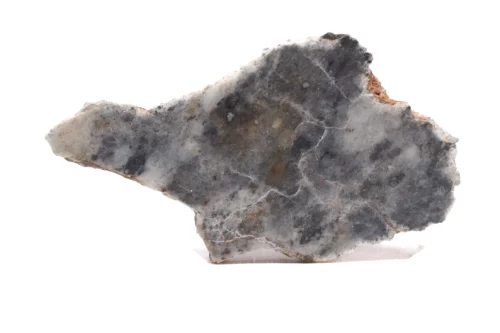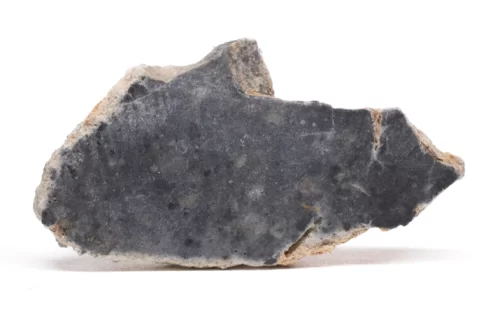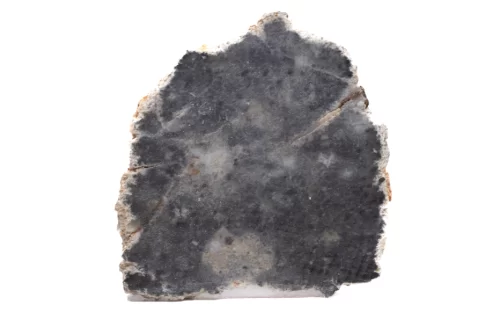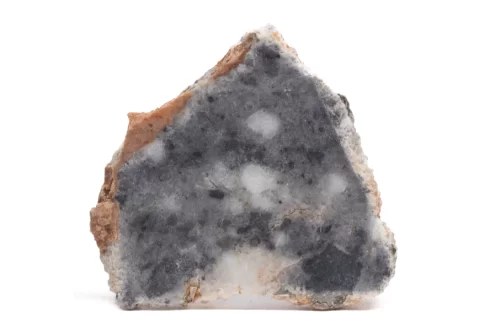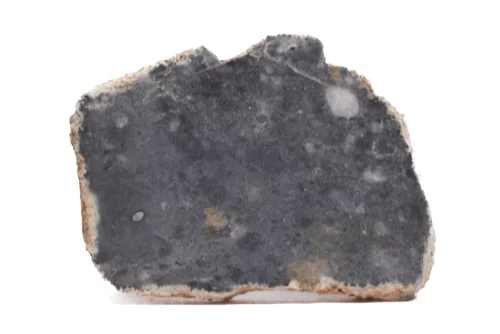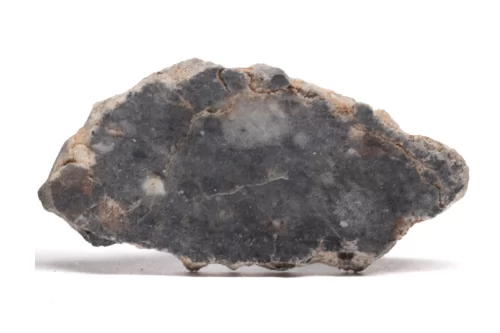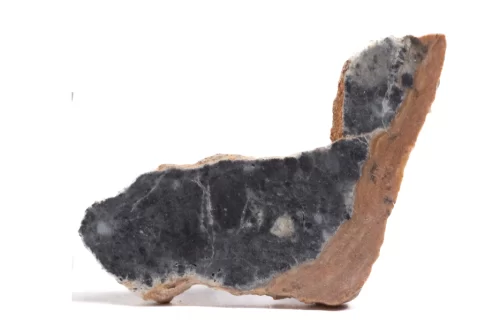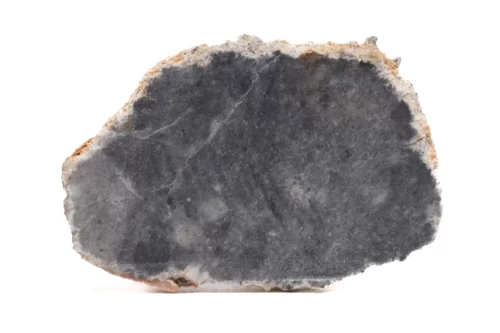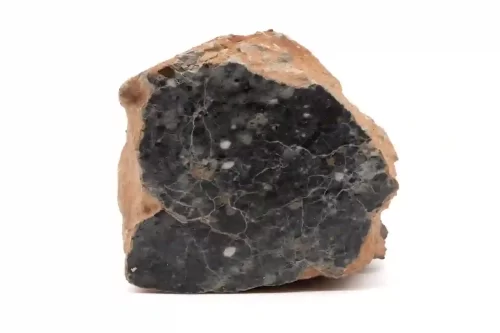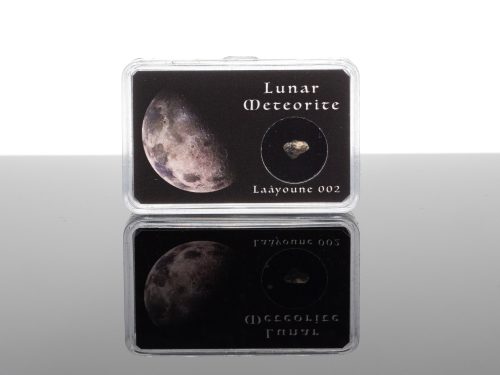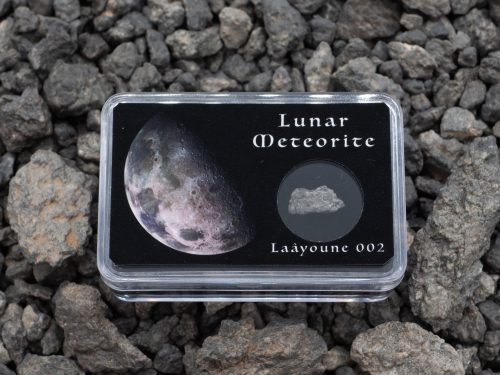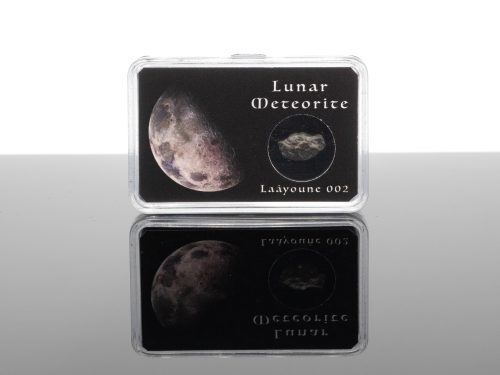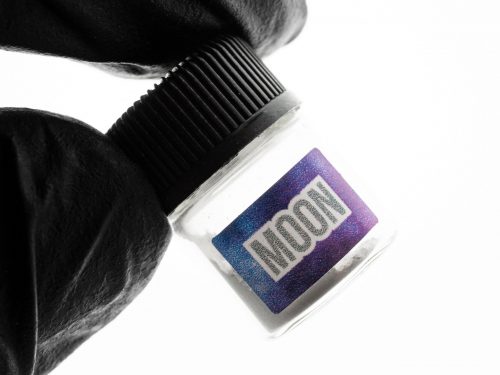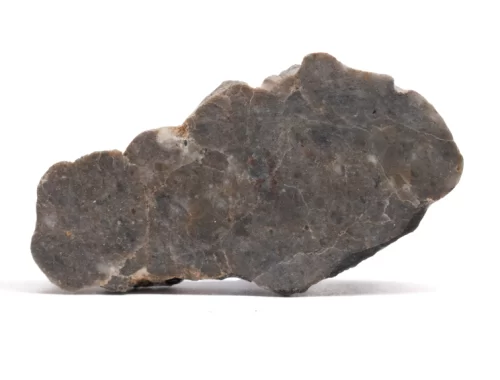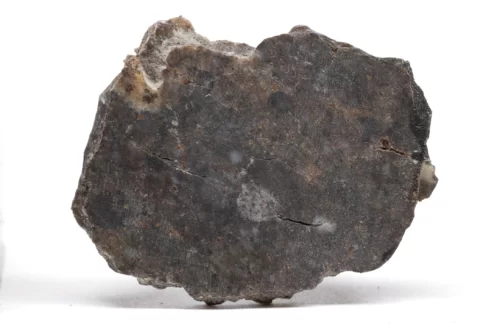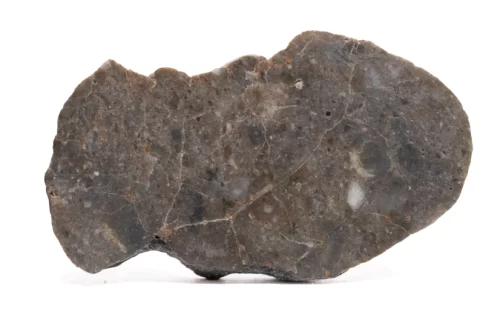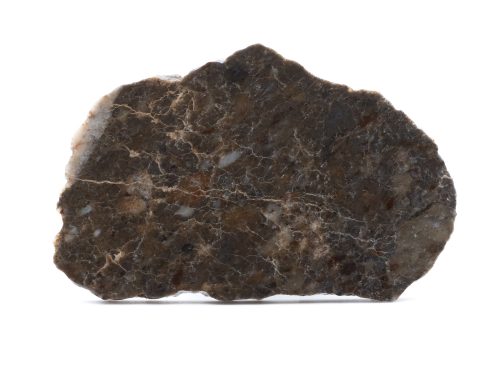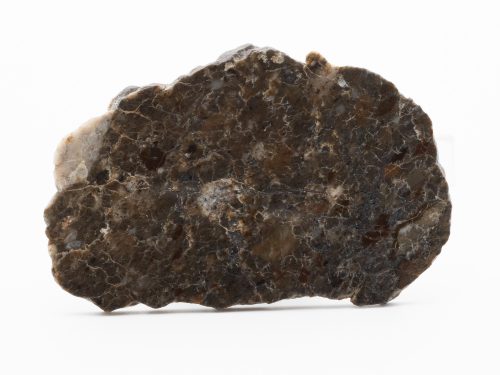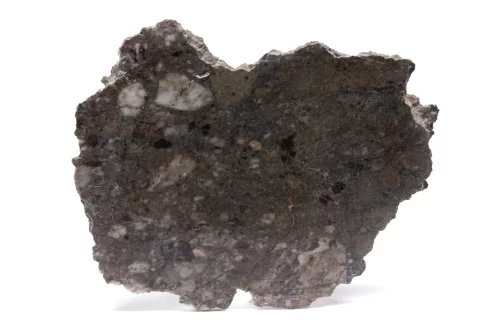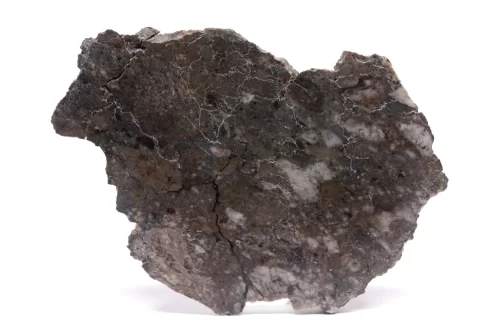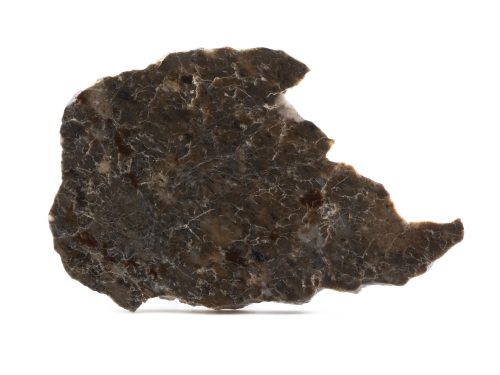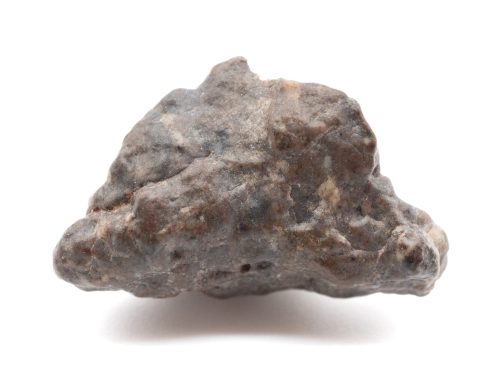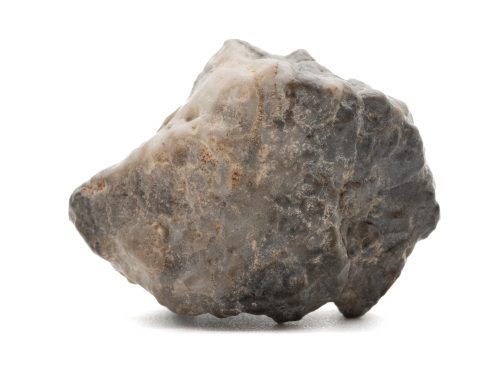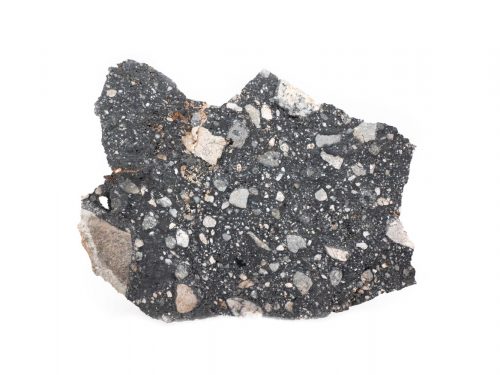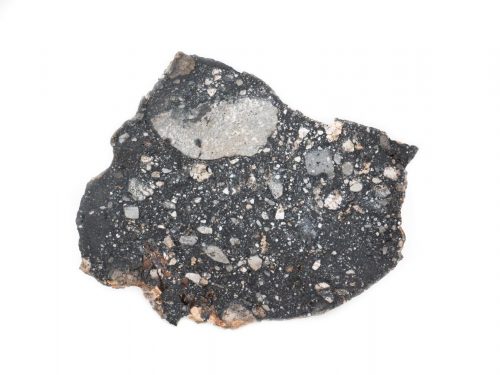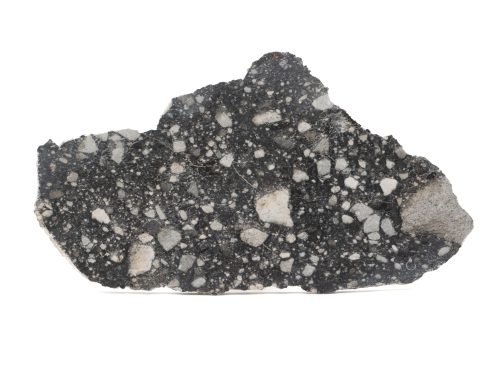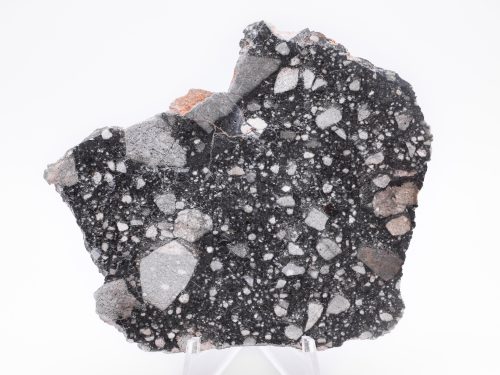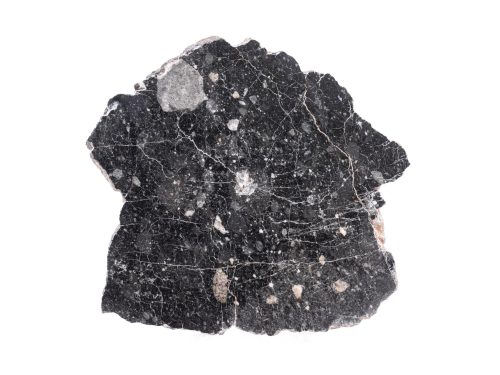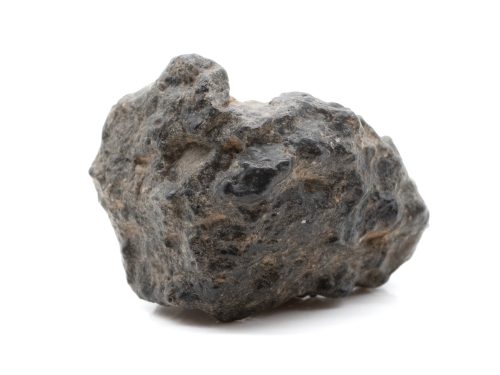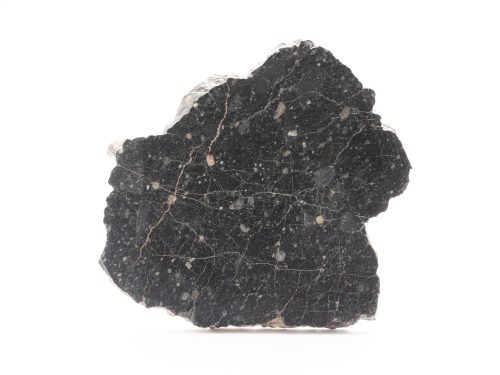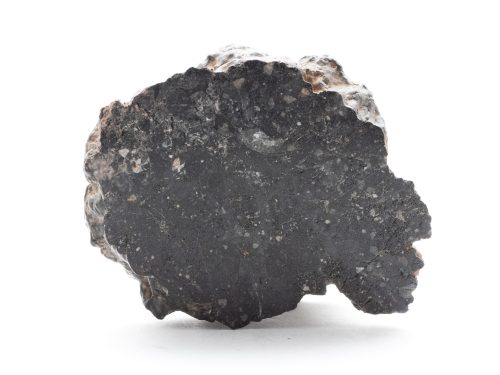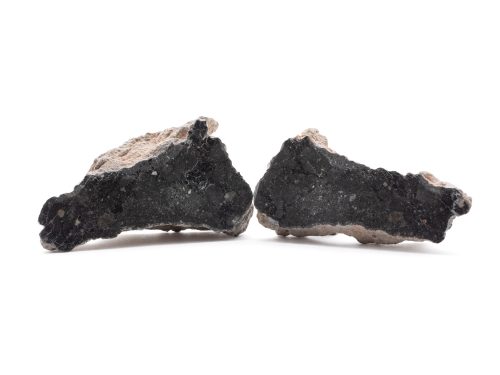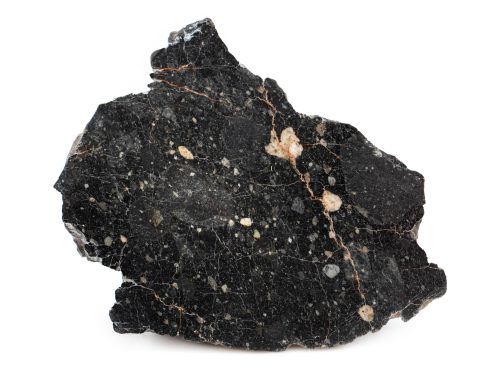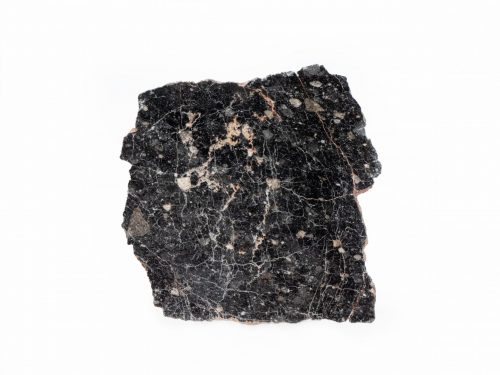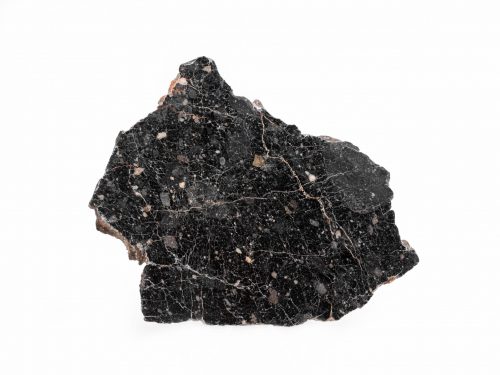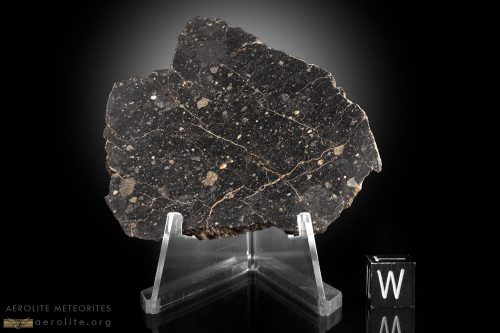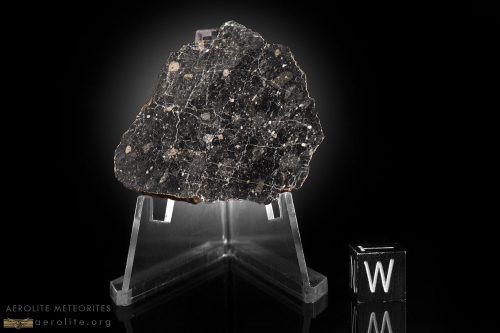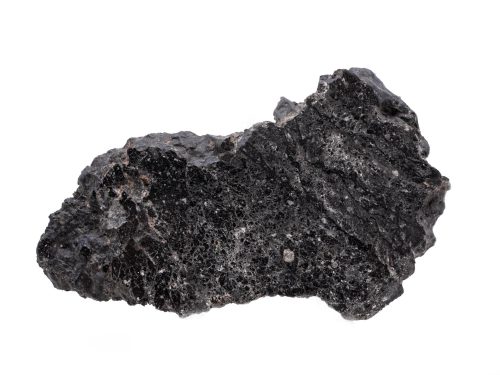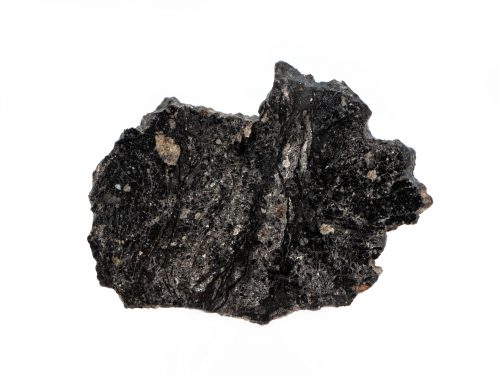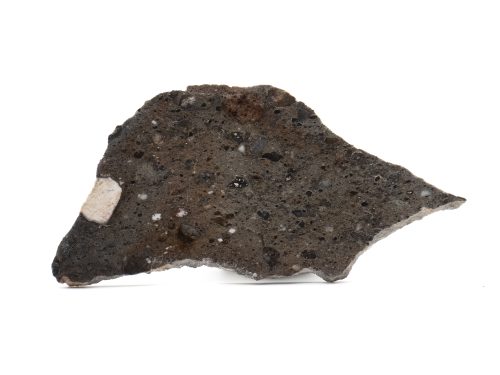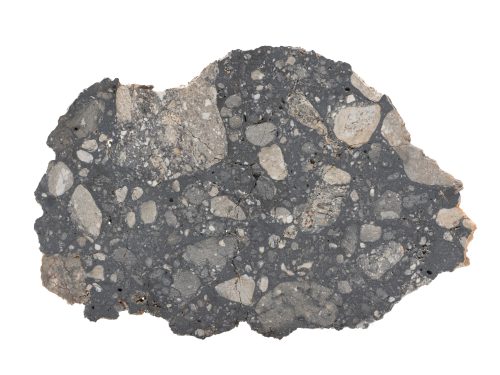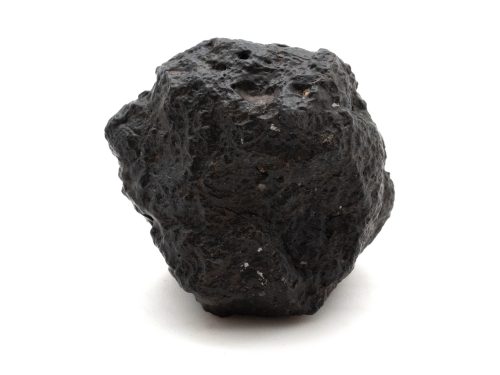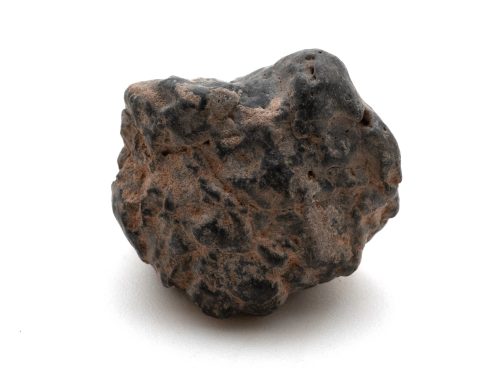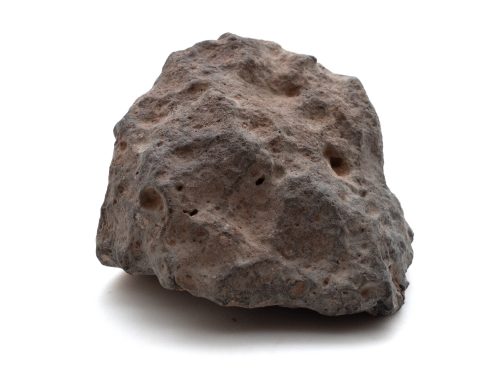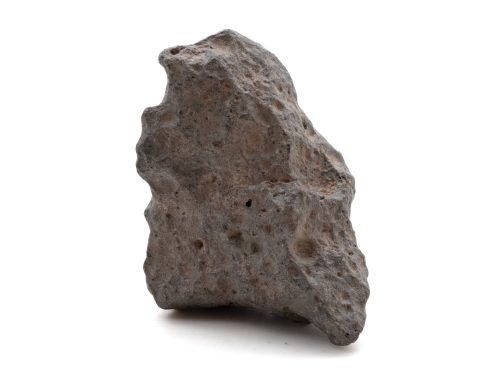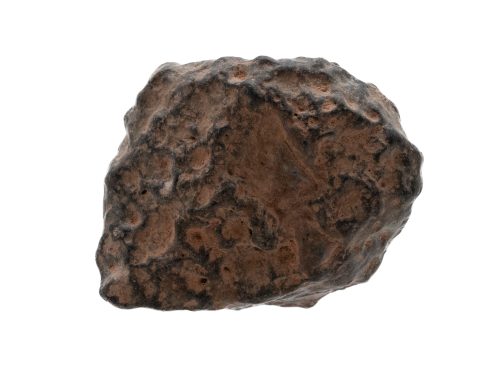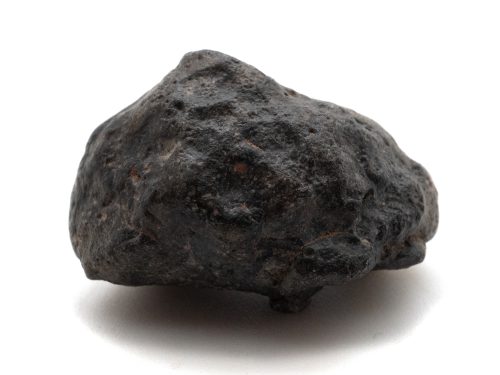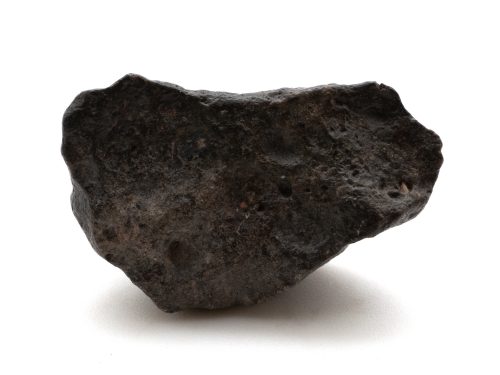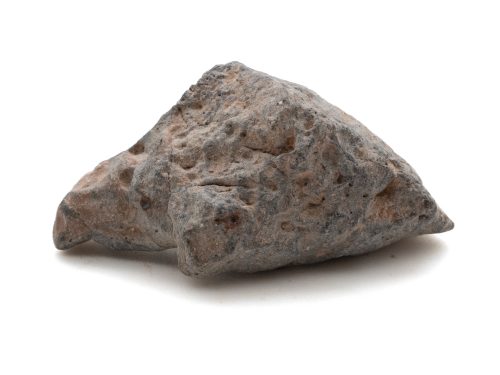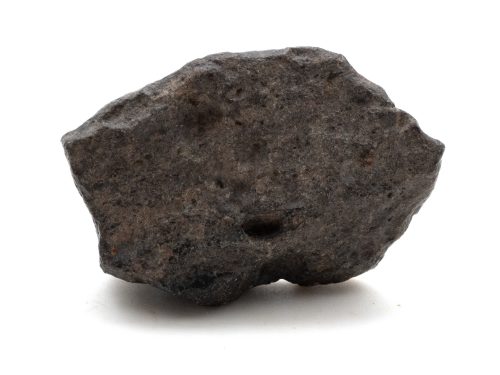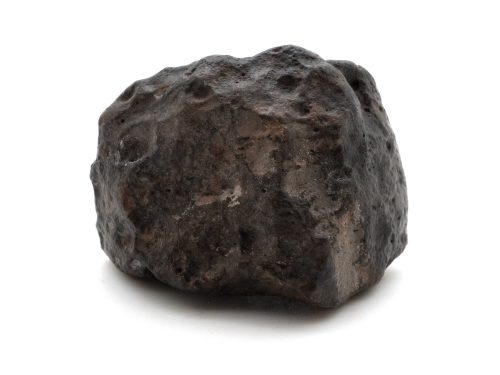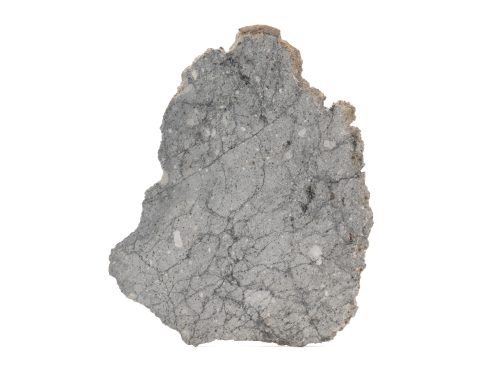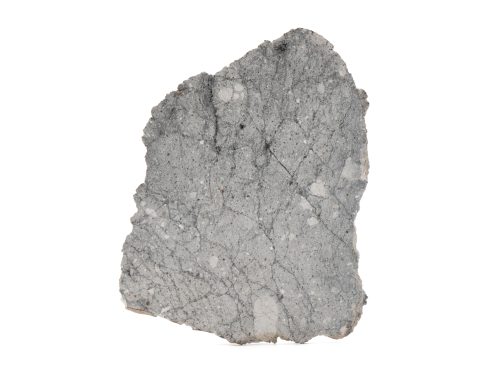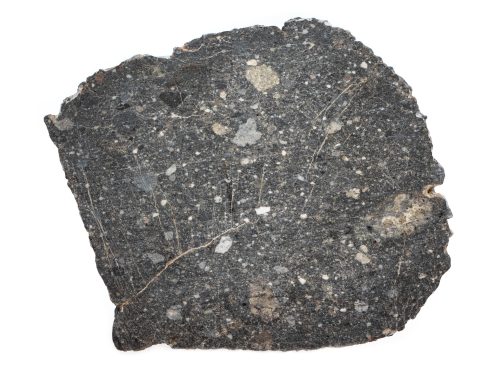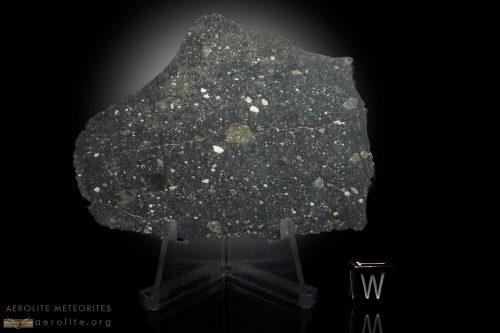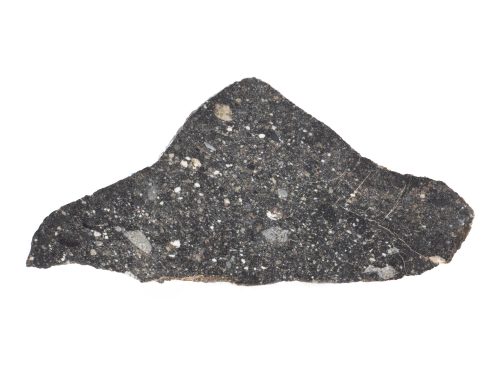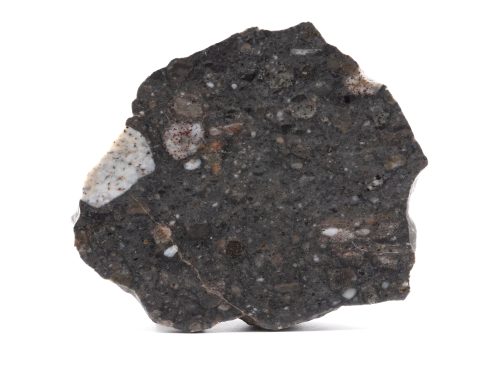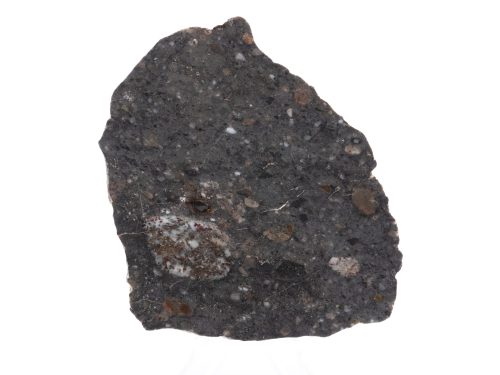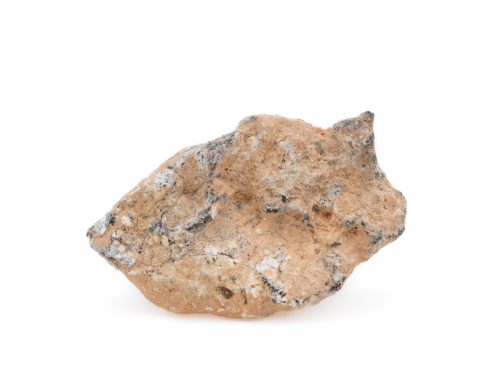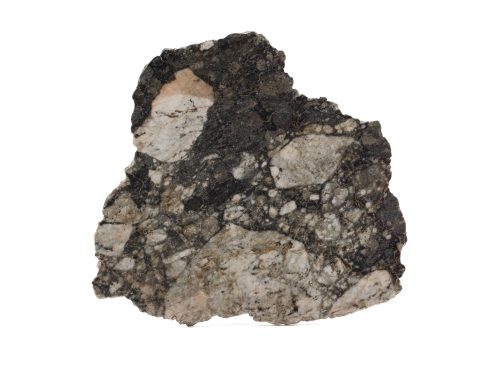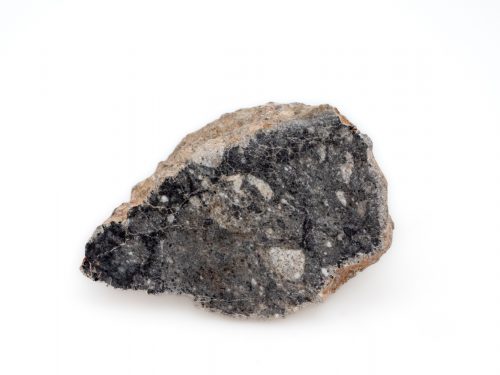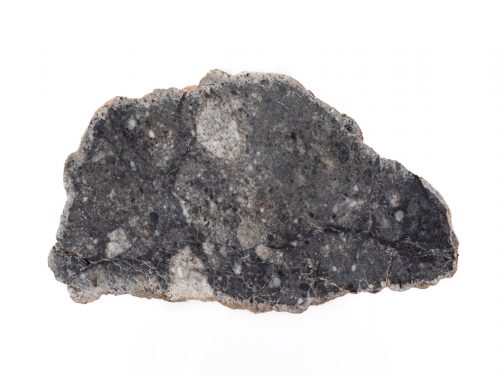Lunar Meteorites For Sale
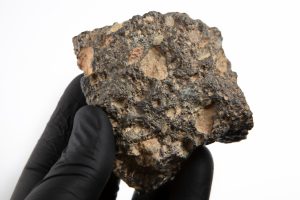
A lunar meteorite whole stone that landed in Northwest Africa
If you look at the Moon through a telescope, you will immediately notice that much of its surface is covered by craters. Some of these may be volcanic in origin, but many or most are meteorite craters and they were made when cosmic debris from elsewhere — most likely the asteroid belt — crashed into the Moon. When the composition of a lunar meteorite that has been found on Earth is analyzed in the laboratory, it is clearly seen to be a match for specimens transported to Earth by the Apollo astronauts. More remarkable than that, even, is the fact that some lunar meteorites can be paired with a particular part of our nearest neighbor, meaning we can tell not just that they came from the moon, but also which part of the Moon!
While it is illegal for private collectors to own Apollo return samples, it is entirely legal to buy lunar meteorites. These specimens have been analyzed and authenticated by leading meteorite scientists and are, without a shadow of a doubt, authentic and legitimate geological examples of our nearest celestial neighbor.
Explore our wide collection of Lunar Meteorites For Sale
Bechar 003 Give The Gift Of The Moon Laâyoune 002 Northwest Africa 11237 Northwest Africa 11303 Northwest Africa 11788 Northwest Africa 12765 Northwest Africa 13964 Northwest Africa 13974 Northwest Africa 8022 Northwest Africa 8277 Tifariti 002 Touat 005Laâyoune Slices
Northwest Africa 11303 Slices
Northwest Africa 11788 Slices
-
Sale!

Northwest Africa 11788 18.8g
Original price was: $3,290.00.$2,990.00Current price is: $2,990.00. Add to cart -
Sale!

Northwest Africa 11788 57.7g
Original price was: $7,655.00.$6,655.00Current price is: $6,655.00. Add to cart -
Sale!

Northwest Africa 11788 63.7g
Original price was: $9,500.00.$8,995.00Current price is: $8,995.00. Add to cart -

Lunar | NWA 11788 59.7g
$10,499.00 Add to cart -

NWA 11788 11.5g
$2,010.00 Add to cart -

NWA 11788 13.4g
$2,340.00 Add to cart -

NWA 11788 16.2g
$2,835.00 Add to cart -

NWA 11788 19.6g
$2,940.00 Add to cart -

NWA 11788 9.1g
$1,590.00 Add to cart -

NWA 11788 9.6g
$1,680.00 Add to cart
-

Lunar | NWA 13974 45.8g
$4,350.00 Add to cart -

Northwest Africa 13974 12.2g
$1,159.00 Add to cart -

Northwest Africa 13974 126.1g
$11,975.00 Add to cart -

Northwest Africa 13974 128.1g
$12,169.00 Add to cart -

Northwest Africa 13974 13.8g
$1,310.00 Add to cart -

Northwest Africa 13974 14.7g
$1,395.00 Add to cart -

Northwest Africa 13974 17.8g
$1,690.00 Add to cart -

Northwest Africa 13974 49.0g
$4,655.00 Add to cart -

Northwest Africa 13974 58.8g
$5,585.00 Add to cart -

Northwest Africa 13974 88.9g
$8,445.00 Add to cart



